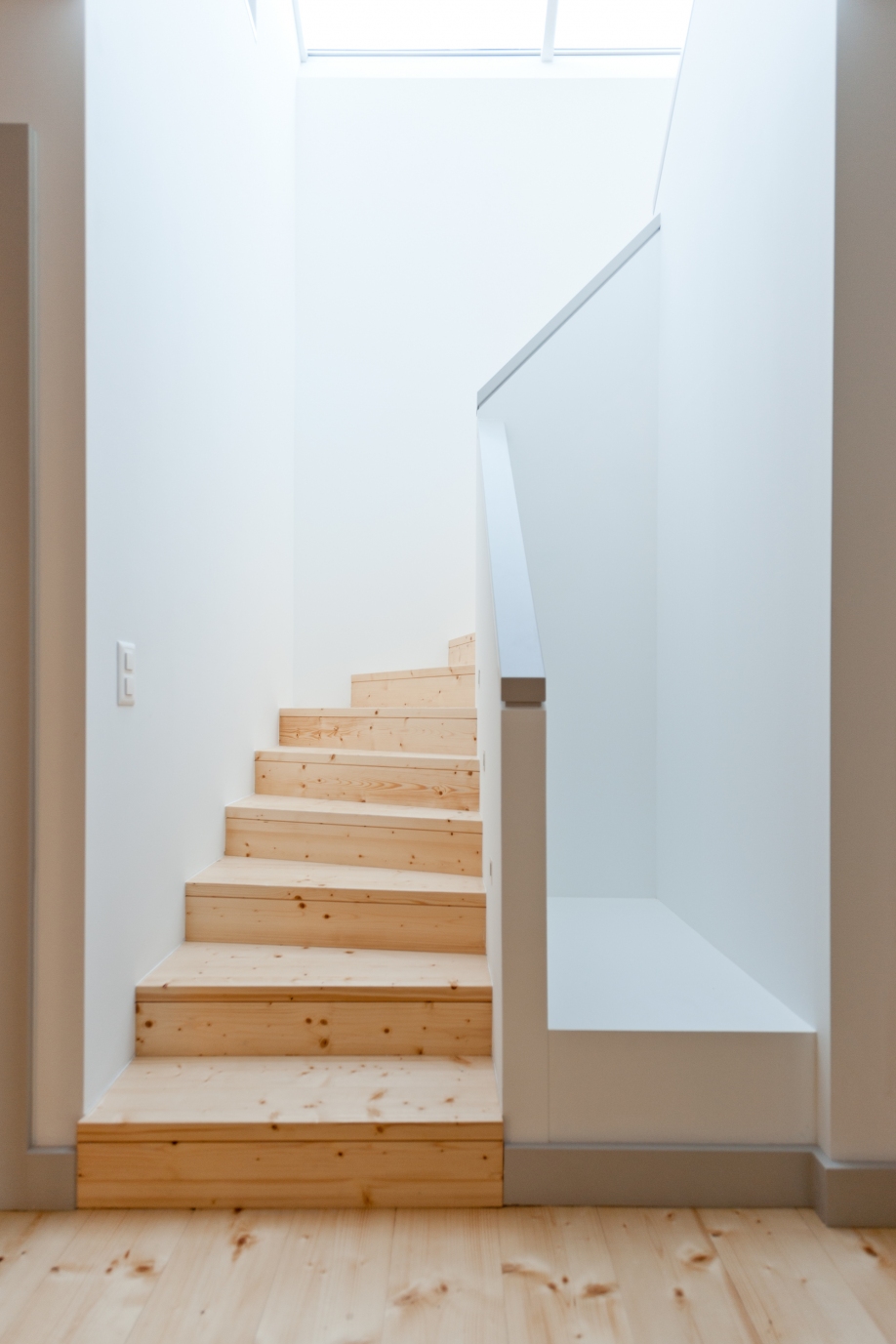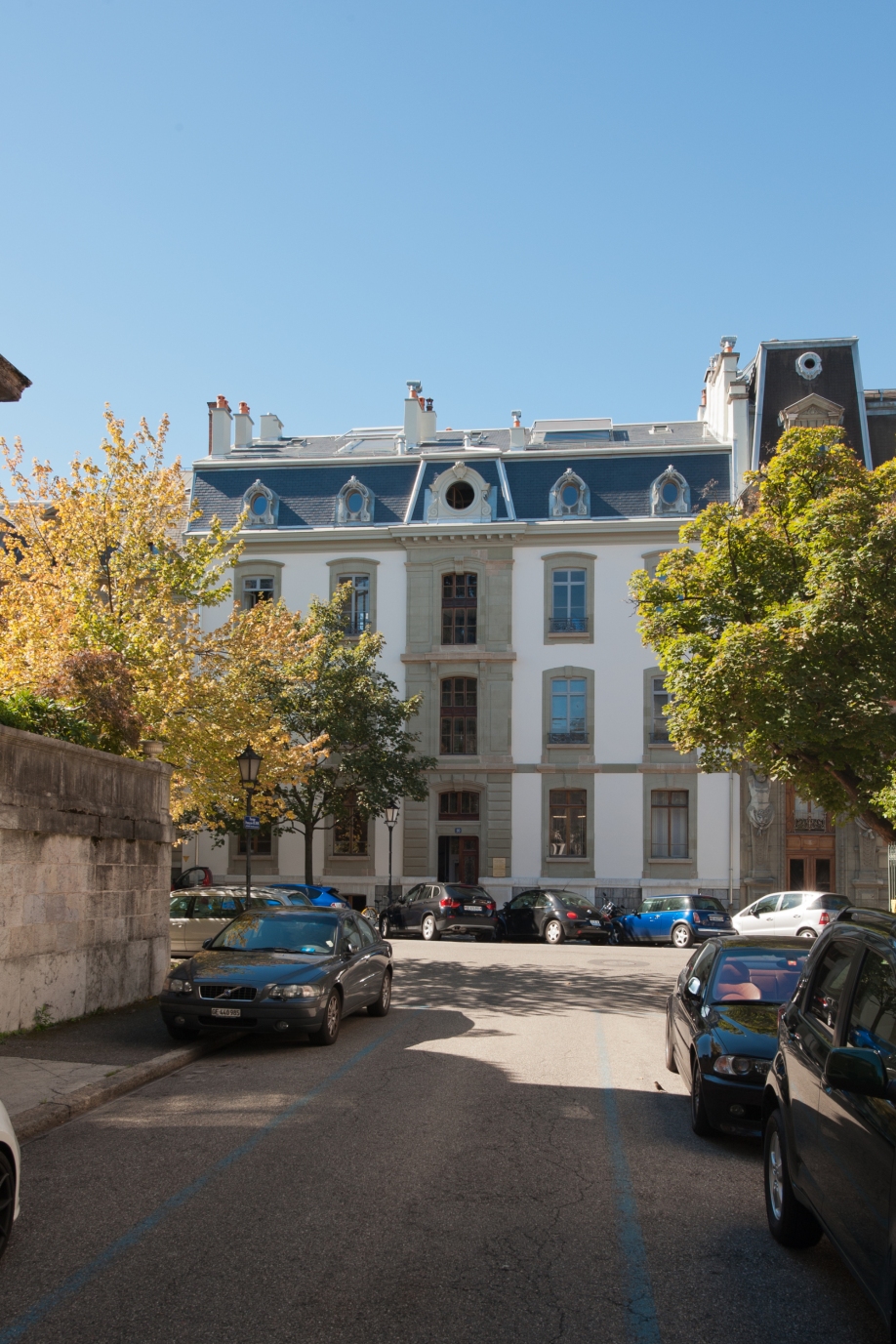ALMOST THE SAME
Delicate realization, the transformation of this building has benefited from sharp attention. Therefore, this constant application has mainly led to define a type of interventions reconciling respect for the building with the satisfaction of the needs of the 21st century.
From the meticulous survey to the mastery of the last details, a critical and uncompromising glance allowed us to diagnose the state of the building, to detect the presence of incongruous elements and to decipher a complex chronology by locating the spatial modifications or successive adjustments.

Designed and built in the 1870s by the architect Henri Frédéric Vaucher, the building finds its place in the elegant district "des Tranchées". Enclosed between two constructions, the building proposes a classical language. The composition of its facades is dictated by absolute symmetry and is based on a clear ordering: base, central body, and crown. Referenced Paris buildings of the Second Empire, the vocabulary nevertheless refrains pompous emphasis, knows how to remain sober and dignified with a restraint all Calvinist.
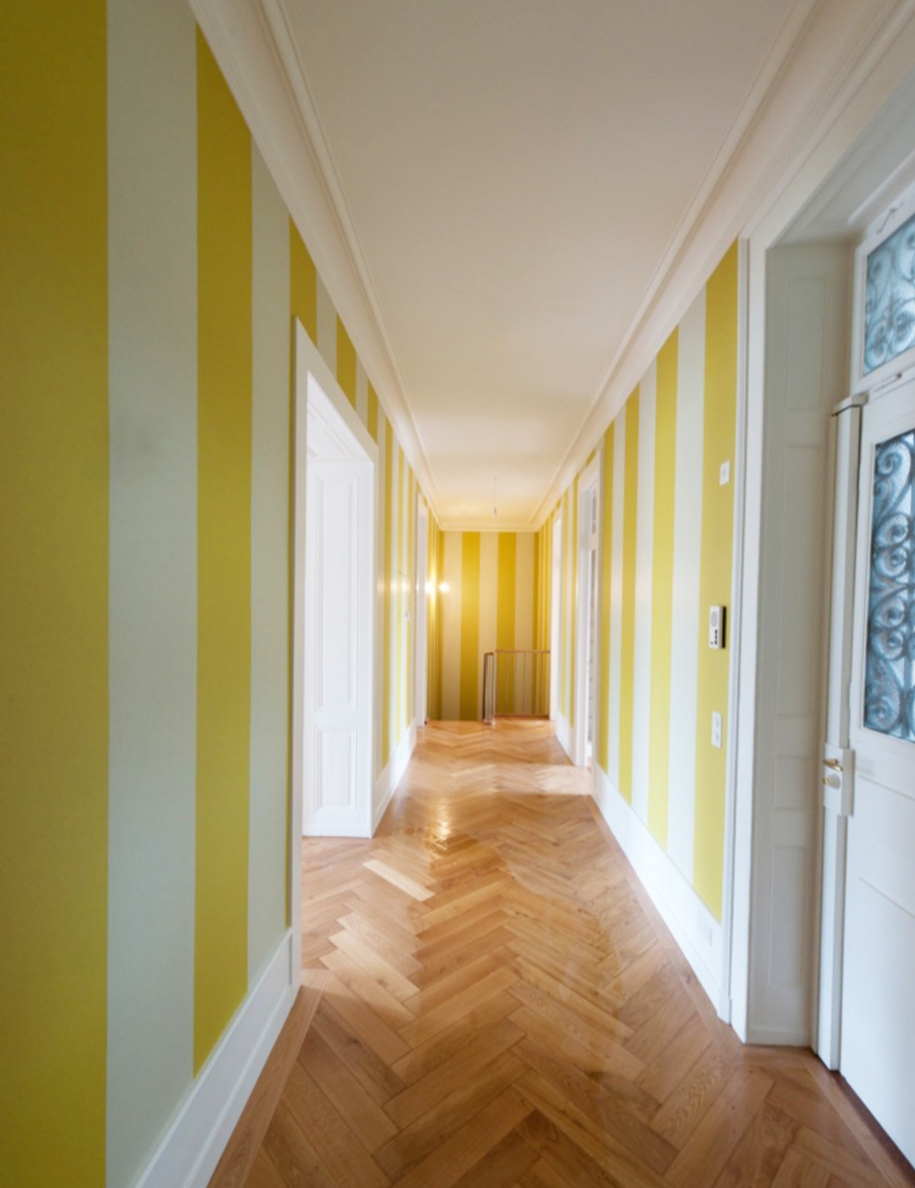

The interior organization operates on a three-bay plan. The deepest benefits from the adjoining reception rooms and the master bedroom. On the other side, adjacent to a beautiful ovoid staircase, are service areas and some more modest rooms. Between the two bays, a generous distribution corridor runs through the building. This coherent tripartite scheme conditions the transformation project which proposes the modification of the dwellings located on the three current floors (the apartments of the first and second being now combined), the complete layout of a large dwelling in the attic and the creation of premises (studios or offices) in a semi-excavated basement.

The revaluation of spaces relies on the erasure of parasitic interventions carried out over time. A sanitation guided by a lucid historical reading and fidelity to the original spatial hierarchy. Pieces often denatured thus find their identity thanks to measured modifications, but also to the restoration or re-use of heritage elements (fireplaces, wood paneling, molded cornices, colored floor tiles and parquet floors). Essential, improved comfort and technical facilities did not corrupt the intrinsic quality of the parts. The thermal insulation was concentrated in the parts without decoration (slab on the basement, roof) and, already present on the north side, the principle of the double window was extended to the whole of the building thus preserving the beautiful old joinery. The propagation of noise is limited by a dry screed implemented under fully deposited and rested floors; the radiators have been quietly placed under the windows; sanitary and kitchen appliances - none of which were original - have all been changed.
In general, in the case of old parts, the options selected meet the integration requirements. Many disappeared or dilapidated elements have for example been reconstituted with traditional methods and materials (old-fashioned glass, decor in staff, external punctures). This option of authenticity contributes to the coherence of the whole. However, it is not applied in new spaces which, like the apartment created in the attic, are arranged in a contemporary spirit.
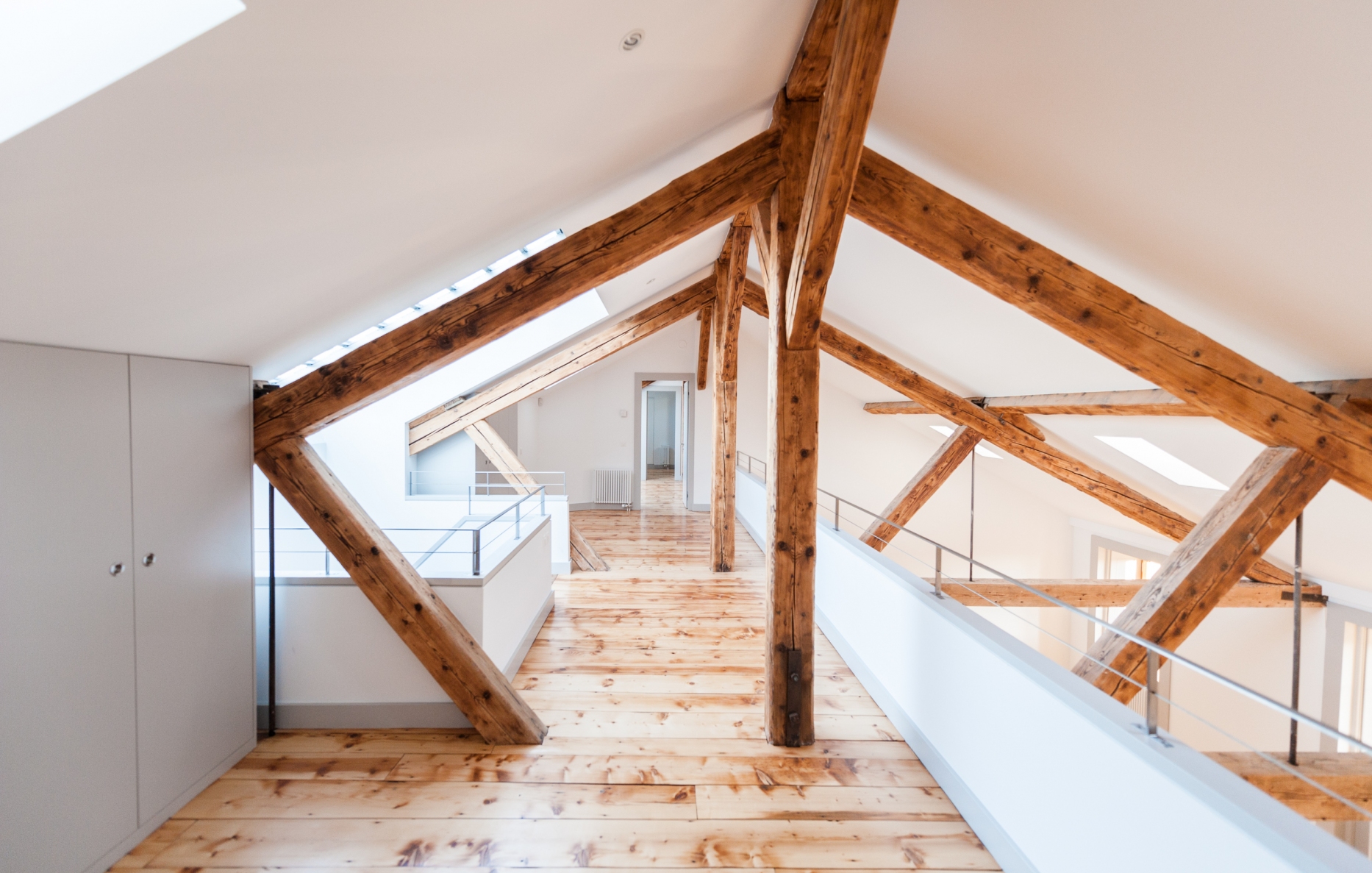
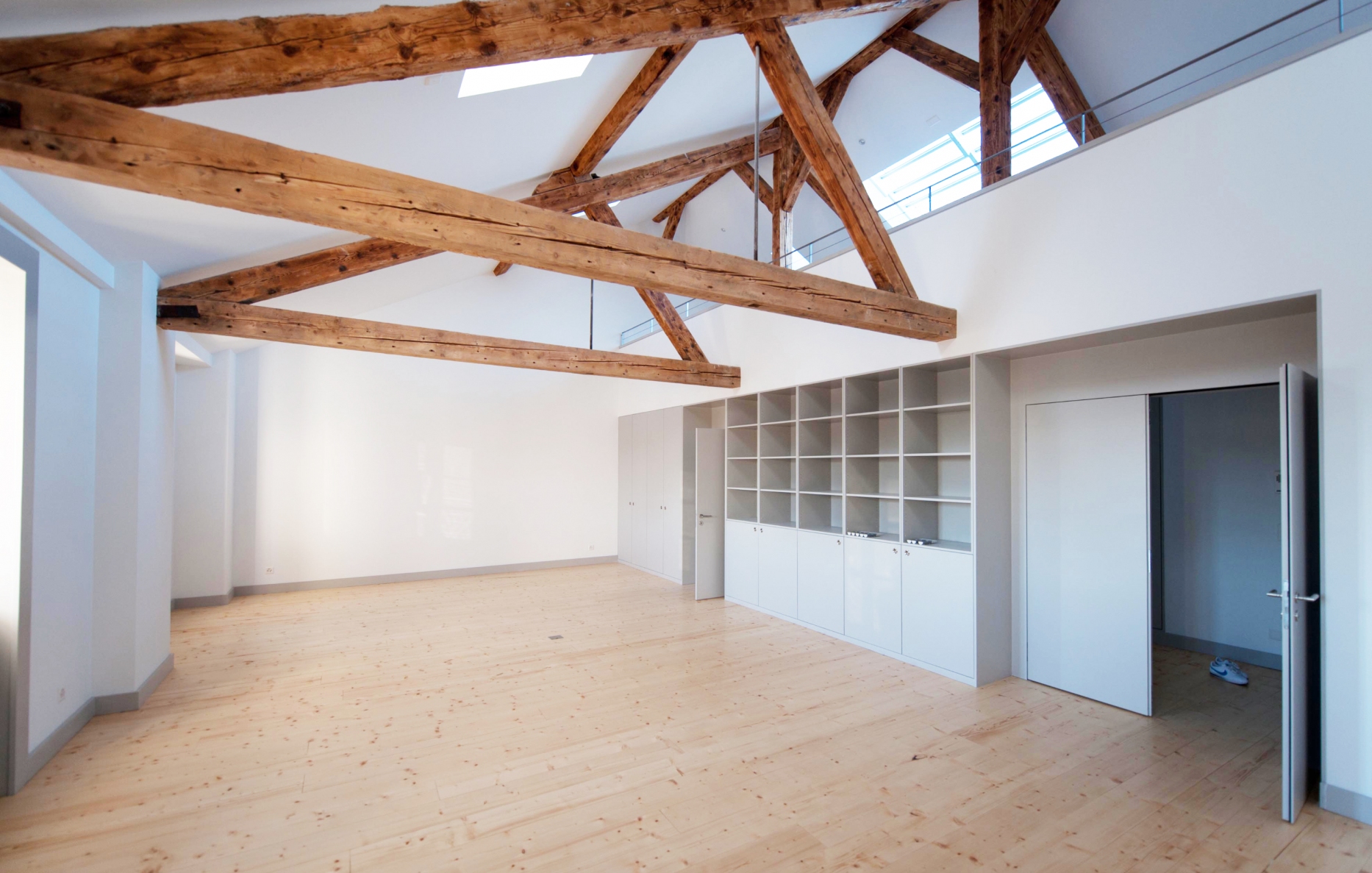
Better than an alleged new youth, the building has found a quiet serenity. That of assumed age and reconquered status, both offered by a project with clear ambitions, concretized by a relevant implementation.
